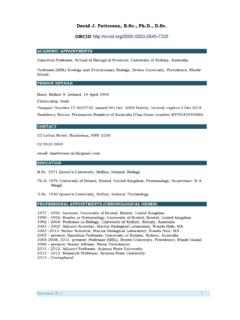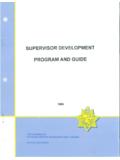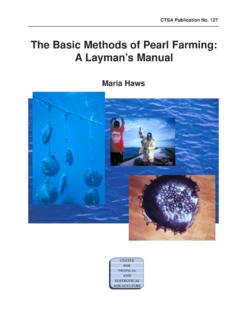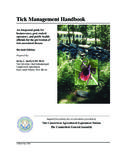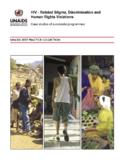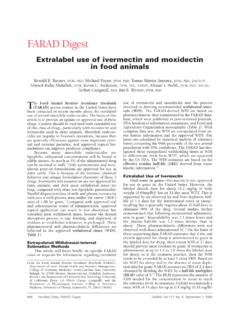Transcription of Climate change going beyond dangerous – Brutal numbers …
1 16 Development Dialogue September 2012 | What Next Volume III | Climate , Development and Equity Climate change going beyond dangerous Brutal numbers and tenuous hopeKevin Anderson I have called this article Climate change : going beyond dangerous , as in my view and that of many of my colleagues, we are now in the process of going beyond what has traditionally been de!ned as the threshold between acceptable and dangerous Climate change . The subtitle of the piece, Brutal numbers and tenuous hope , refers to the maths and the quanti!cation underpinning the analysis. The num-bers are Brutal and hard to accept, begging fundamental questions about how we live our lives they are not numbers we want to hear. Translat-ing the analysis into repercussions for society, it is evident there is now only a tenuous hope of making the substantive mitigation necessary in the rapidly diminishing time frame available.
2 Given the grave situation we have (knowingly) got ourselves into, we need to be honest, direct and clear as to the implications of our analysis. Only if we strip away the rhetoric and naive technological optimism surrounding Climate policy can we have some hope of responding appropriately to the scale of the challenges we face. If we are not honest about the situation we will continue to do nothing substantive. Instead we will carry on with the same ine"ective policies we have pursued for the past two decades what I refer to as cognitive dissonance (an academic disguise for hypocrisy sticking our head in the sand and, despite the science and data, convincing ourselves everything is going to be all right). The evidence however, is that we have been heading in the wrong direction for years and, more disturbingly, the situation is worsening rather than improving.
3 Since the #$$% Rio Earth Summit, where the Climate convention was brokered, we have witnessed a rise in emissions If we are not honest about the situation we will continue to do nothing sticking our head in the sand and, despite the science and data, convincing ourselves everything is going to be all article is based on a transcript of a public presentation at the UK s Department for International Development (DFID) in July 2011, available at Keith Kris17 Development Dialogue September 2012 | What Next Volume III | Climate , Development and Equity year after year not only that, but the rate of growth of emissions has also increased. If we are to turn this situation around we have !rst to acknowledge that despite numerous Climate conferences, political soundbites and optimistic discussion of low-carbon technologies, we have abjectly failed to secure any control over emissions.
4 The void between rhetoric and realityA prerequisite of responding to the Climate challenge is exposing the void between the rhetoric and the reality around e"orts to reduce emis-sions (mitigation). There is certainly plenty of discussion of mitigation, but seldom does it focus on the actual gap between the claims we make as individuals, companies, nations and a global community and what is actually happening in terms of absolute emissions. Buying a slightly more e&cient car or improving the performance of supermarket re-frigerators has nothing to do with solutions to Climate change if we subsequently drive further or chill more of our food. So what is Climate change about? What are we responding to? Internationally, there are a range of statements and declarations framing Climate change and our agreed responses to it.
5 First and foremost, the UN Framework Convention on Climate change (#$$%) states in its Article % that:The ultimate objective of this Convention and any related legal instru-ments that the Conference of the Parties may adopt is to of greenhouse gas concentrations in the atmosphere at a level that would prevent dangerous anthropogenic interference with the Climate system. Such a level should be achieved within a time frame su&cient to allow ecosystems to adapt naturally to Climate change , to ensure that food production is not threatened and to enable economic development to proceed in a sustainable manner. The more recent Copenhagen Accord (UNFCCC, %'#') states the goal as to hold the increase in global temperature below % degrees Celsius, and take action to meet this objective consistent with science and on the basis of equity (it even recognises the need to consider strengthen-ing the goal to #.)
6 ( C). This is a very clear statement reiterated in the Cancun Agreements (UNFCC %'##) and an important backdrop against which to examine and quantify the scale of the policy challenge. Looking to the EU, the European Commission (%'')) reiterates the need to ..ensure that global average temperature increases do not exceed pre-industrial levels by more than % C and states that we must adopt the 18 Development Dialogue September 2012 | What Next Volume III | Climate , Development and Equity necessary domestic to ensure that this is the case. Likewise, the UK s Low Carbon Transition Plan (DECC, %''$) states that average global temperatures must rise no more than % C (author s italics). This language is not about accepting a (':(' chance of keeping to % C. The Cancun Agreement, the EU and the UK, all categorically state that temperatures must rise no more than % C.)
7 Understanding the probability of staying below (or of exceeding) % C is pivotal to any informed discussion of mitigation an absence of clarity on this is-sue risks confusion and inappropriate policies. As it is, policy-makers (along with many academics and Climate specialists) repeatedly make statements, emphasising the importance of staying below % C whilst at the same time proposing policies that imply a very high chance of exceeding % C. It is from here that much of the void between Climate rhetoric and actual mitigation policies does 2 C mean?The framing of % C refers to the global mean surface temperature rise compared to the pre-industrial period. Since then, and due to the burn-ing of fossil fuels, greenhouse gas concentrations in the atmosphere have continued to increase and temperatures have gradually risen.
8 A % C average rise may not sound too bad if you live in the UK, for example. However, the regional repercussions vary considerably. An average warming of % C might mean that temperatures at the poles rise by up to + C and parts of Africa experience considerably higher warming than many other regions (May, %''+). Furthermore, most of the planetary surface consists of oceans, and water has a high capacity for absorbing heat, so an average global rise of % C may correspond to an average land-based temperature rise of , C triggering marked changes in temperature and precipitation patterns. The repercussions of an average % C warming reach deeper than we tend to has a % C rise become the focal point of Climate change discourse?Over the past decades, many scientists have explored the various impacts associated with changes in global and regional temperatures.
9 More re-19 Development Dialogue September 2012 | What Next Volume III | Climate , Development and Equity cently these have been summarised and brought together to provide a succinct management and policy tool to help guide decision-making. The impacts have been summarised according to !ve di"erent categories# with each category coloured along a continuum from white (acceptable) to red ( dangerous )(Figure #). Through a slow process of engagement between scientists, policy-makers, companies and civil society, % C has become established as a guard-rail between acceptable and dangerous levels of Climate change . While impacts resulting from temperature rises below % are not, on average, considered desirable either, it is widely, and often tacitly, assumed that they are somehow manageable and tolerable.
10 The !rst assessment of these impacts was made in the late #$$'s and early %'''s (the left-hand graph). When the impacts were revisited in time for the Copenhagen Climate summit in %''$, the scienti!c under-standing of global warming impacts had advanced, with all of the bars demonstrating greater impacts for any given increase in temperature. Not only do the impacts occur earlier than had been thought, but the set of impacts considered to be just about acceptable corresponds with much lower temperatures. The conclusion is clear. The impacts of % C are more serious than previously thought, and consequently the % C guard-rail lies in far more dangerous territory. If the logic of de!ning % C impacts as dangerous is to hold, the more recent impact analysis 1 Risks to unique and threatened systems, risks of extreme weather events, distribution of impacts, aggregate impacts and risks of large-scale discontinuities ( tipping points ).
